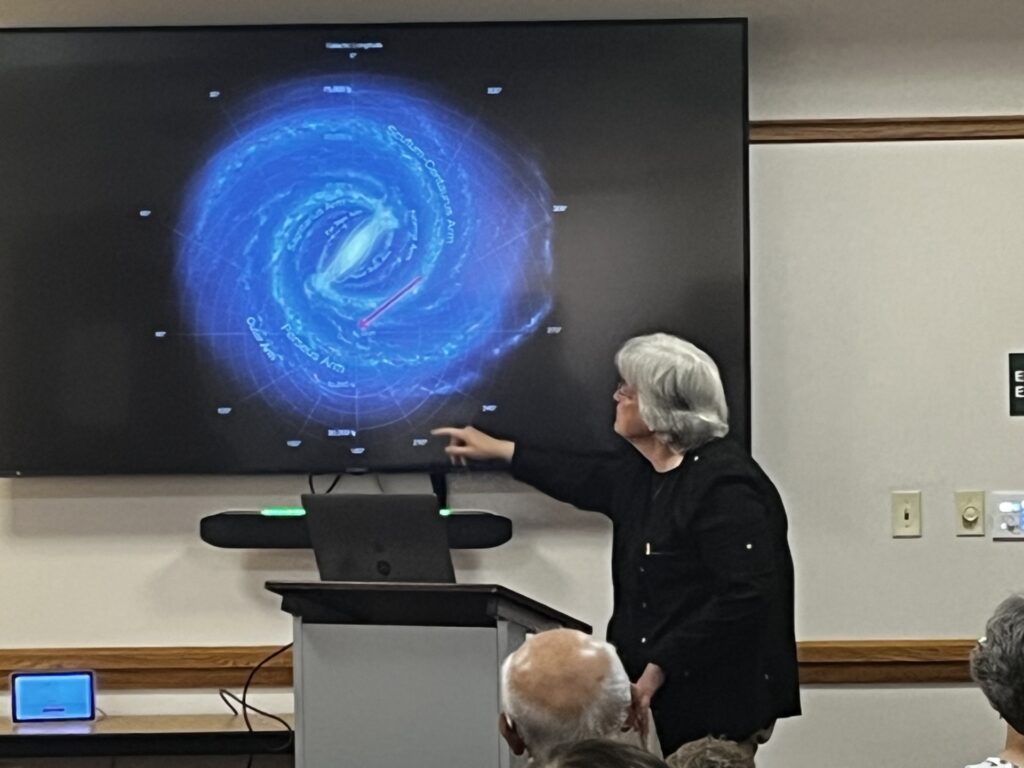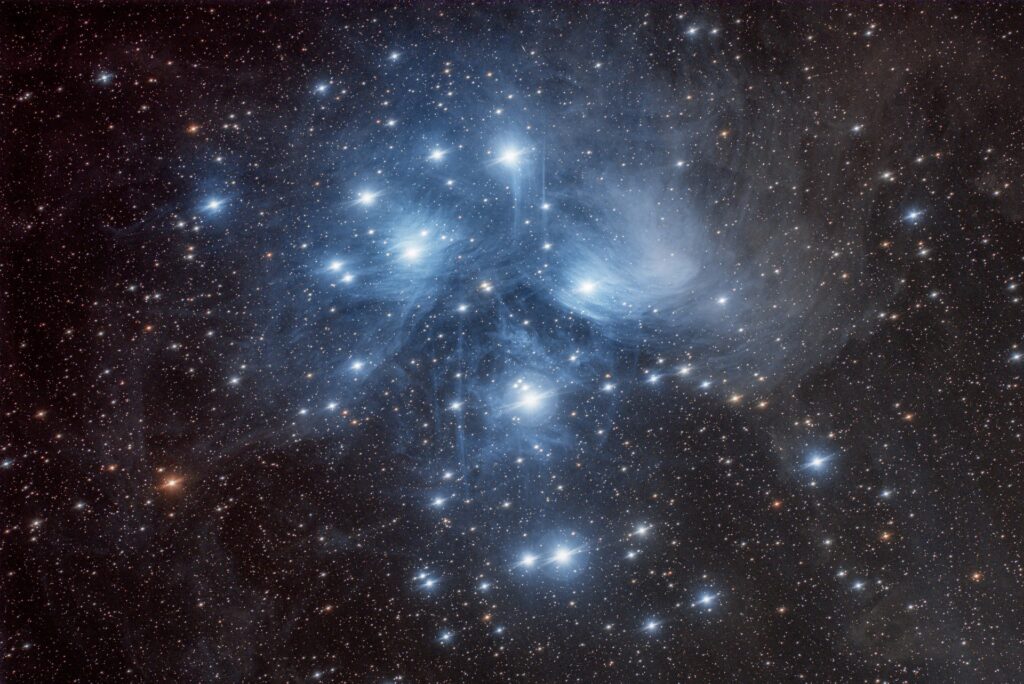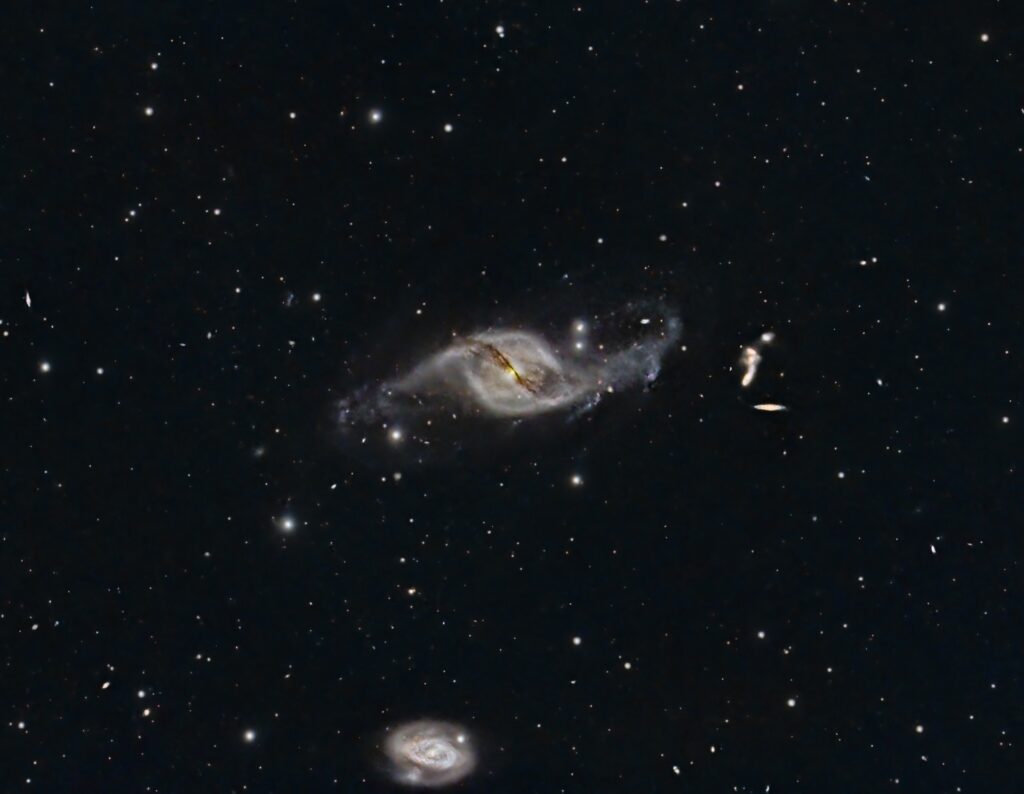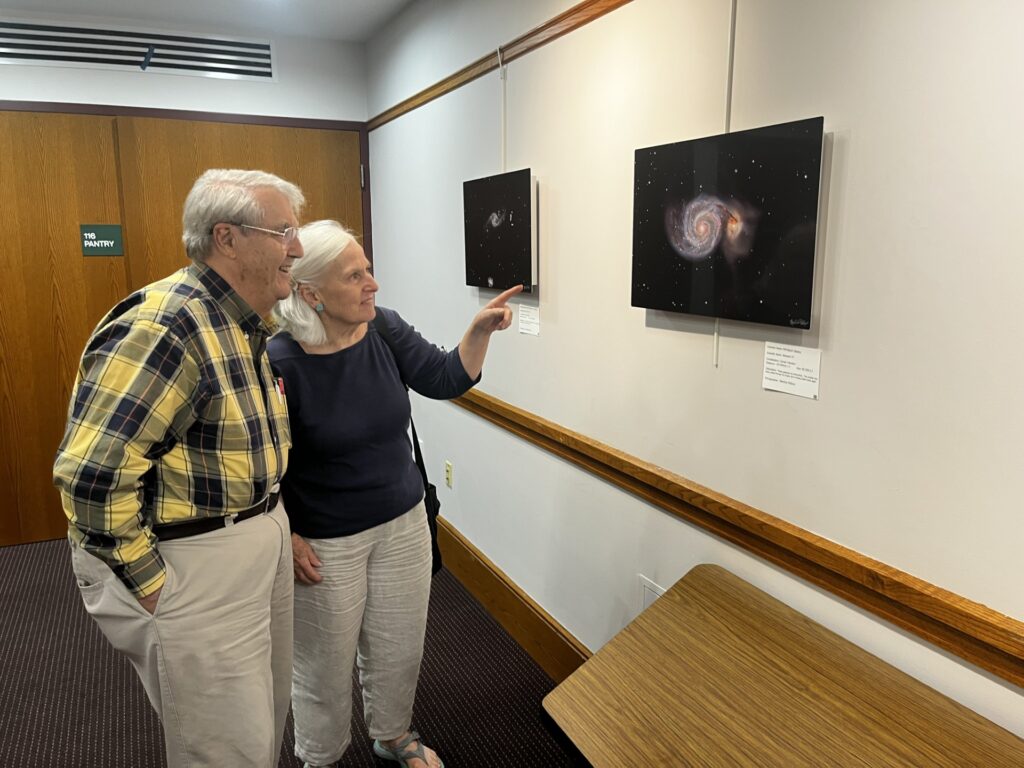On September 9, the Acton Memorial Library’s gallery artist series departed from its usual earthly fare and welcomed Acton resident Marsha Wilcox to show and describe her stunning images of nebulae and galaxies, the current exhibit in the library’s gallery space. Nebulae are interstellar clouds of dust and gas that either emit or reflect light, and galaxies are clusters of stars. In either case, light from these entities travels across vast distances through the universe, to be captured by Wilcox’s telescope. She then processes the captured data into images that straddle the divide between art and science. As she explained to a full-house audience at her gallery talk: “There is art in the science, and science in the art.”

Wilcox entitled her exhibit and talk “Ancient Light” because the light that formed each image left its source nebula or galaxy so long ago. As a viewer enters the gallery, the youngest image is on one’s immediate left: the stars of the Pleiades constellation. Their light is only 444 years old; their distance from Earth is only 444 light-years.

As the visitor circles the gallery clockwise, the captured light becomes older and older, and the imaged entities are farther and farther from Earth. Just before returning to the gallery entrance, the visitor encounters an image made from 52-million-year-old light emanating from a galaxy in Ursa Major, the most distant object in Wilcox’s collection.

Wilcox organized her talk along the same story arc, from young light (closest object) to oldest light (farthest object). To help the audience grasp the vast times and distances encompassed by these celestial objects, she provided time checks keyed to events on Earth. When the Pleiades light left its parent stars, European explorers had just reached the Americas. When the light in Wilcox’s Pac Man Nebula image was emitted, humans were practicing rudimentary farming. When the oldest light in the collection began its journey, there were no humans on Earth, the tectonic plate configuration was different, and the Indian subcontinent was smashing into the soft underbelly of Eurasia to form the Himalaya Mountains.
Wilcox interwove her celestial explanations with vignettes about how she creates these images. She occasionally packs up her telescope and imaging hardware, plus her three golden retrievers, and drives to dark sky locales in New England or beyond. But many of her images were made from her own driveway right here in Acton, waiting patiently for nights without clouds or moon. Because the objects are so faint and far away, each image is made by collecting multiple exposures of the target portion of the sky and then using special software to stack the images. Her telescope automatically adjusts its orientation to stay aimed at the same location in the sky while the Earth turns beneath it.
As Wilcox wrapped up her talk, the audience erupted into questions. How do you know how old these things are? Where do the names come from? Why do galaxies look like hurricanes? How long does it take you to make one image [about 15 hours of quality imaging time]? How do you decide what to photograph? Viewers lingered, looking and chatting and asking questions, long after the end of the formal talk, until shooed out the closing-time door by the library host.

Knowing that Acton has a high density of tech-savvy residents, the Acton Exchange asked Wilcox for the technical details about her telescope and imaging system. She replied: ” You asked about my telescope. The telescope is a Celestron EdgeHD 11″ with the Celestron 0.7 reducer. I use a ZWO ASI2600MM Pro monochrome camera with red, green, blue, hydrogen alpha (Hii), oxygen (Oiii), and sulfur (Sii) filters. The scope is on a Celestron CGX mount. I also use a Celestron off-axis guider with a ZWO 174mm guide camera. I’ve just changed to the Eagle 6 astrophotography computer to run the rig.” Wilcox’s website includes explanations of color in astroimaging and how to think about light-years as a measure of distance. She welcomes questions.
Wilcox’s images will be on view in the Meeting Room on the first floor of Acton Memorial Library throughout September and October. The library has recently shortened its hours; check current hours here. You can also view many of the exhibited images on the Glory of the Heavens page of Wilcox’s website.
Kim Kastens is an Associate Editor and Board member for the Acton Exchange, and writes occasional articles, often about nature or the environment.













